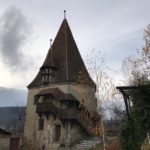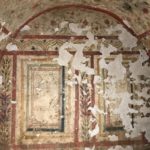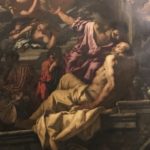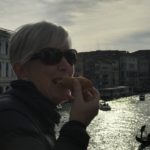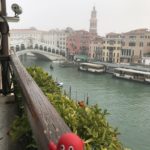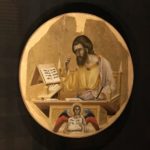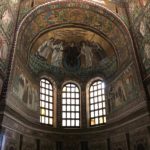Budapest to Sighisoara- 640 km (train)
Sighisoara to Bucharest- 280 km (train)
Bucharest to Sofia – 380 km (train)
& 63545 Fit Bit Steps
On the overnight train that runs from Budapest to Bucharest, we were wakened by shouts and banging on the door of our sleeper compartment by Hungarian border police. A stern-looking female officer spent rather a long time examining our passports before finally approving our exit from the country. About 30 minutes later, just as we had dozed off again, our door was thrown wide open and the ceiling light switched on (Paul had forgotten to lock the door after the last border check). A Romanian border police officer was now standing over us, demanding our passports. Lois, who has been reading Philippe Sands brilliant work, East West Street, thought how terrifying such a disconcerting interrogation would have been for people trying to escape Nazi occupied Europe using forged documents.
We had decided to stop for a day at Sighişoara, a UNESCO World Heritage site in Transylvania, recommended by our friend Isabel. The well preserved medieval town with its original wall and guard towers is the birthplace of Vlad the Impaler, whom Bram Stoker used as a basis for the character of Count Dracula. The souvenir shops make the most of the connection and the colour red is a big theme in dishes served in the restaurant in Vlad’s parents’ house! In Stoker’s novel, the Count’s castle was in North Eastern Romania, in the Carpathian Mountains. Paul was inspired to take out the e-book of Dracula from the Vancouver Public Library, which served him well on our long train rides in the days ahead.
In the Biserica din Deal of St Nicolas overlooking the town, there are frescoes of St George and the dragon. One of the custodians gave us a great account of two of the St George legends. The one depicted in the church was from the Golden Legend, a book from around 1260 that recorded the lives of the saints. Apparently it was a medieval best seller! The church also contains a number of wooden chests from the area that we were told were used to store food and hide jewels during times of siege.
After Sighişoara, crossing the snow-capped Carpathians, we passed through poor looking mining communities, reminders that Romania has the lowest human development index of any State in the EU. However, the country is rich in natural resources and the largest gold reserves in continental Europe are in the area of Rosia Montana. A Canadian company, Gabriel Resources, wishing to exploit the deposits has come under much criticism and protests by Romanians as result of environmental and cultural concerns.
We stayed one night in Bucharest in what remains of the old town, many buildings having been demolished under Caucescu and replaced with his own edifices. Tucked behind newer apartment blocks, we eventually found the Great Synagogue. No longer used for prayer, it houses a remarkably detailed display of materials and photographs documenting the systematic discrimination against, persecution and murder of Romanian Jews during the Second World War. Again, hundreds of thousands perished at the hands of both the Nazis and the Romanian authorities. The older gentleman who showed us around must have been old enough to remember those times if he had been there but we did not want to ask him.
To get to Sofia, we took one train to the border, the Danube, and another into Bulgaria. While waiting for the train at Ruse, we chatted with a student from Beijing who is presently studying in Berlin. He was trying to locate something to eat, to no avail. Luckily, we have been getting helpful railway advice from The Man in seat 61 (seat61.com), as recommended by our friend Helen. We were forewarned that on the 10 hour journey there was no restaurant car!
We were in Sofia less than 24 hours but were able to see a number of sites, including the gold spired Russian Church, built on the site of a Mosque, destroyed in 1882, after the Russian liberation of Bulgaria from five centuries of rule by the Ottomans. We walked through the St Alexander Nevsky Cathedral, built between 1882 and 1912 to honour the 200,000 Russian soldiers who died fighting for Bulgarian independence. The church has thrones for both the Archbishop and the Tzar.
Although Bulgaria was an ally of Germany in both World Wars, of interest is that in WWll, Bulgaria saved its Jewish population from deportation to concentration camps.
Close by the cathedral is the Basilica of Santa Sofia. The building is in fact four churches, built over successive periods from the 4th C AD, the first constructed over a necropolis of the ancient Roman city dating from the 3rd C AD. One tomb is painted with flowers but no Christian symbols. In the 16th century, during Ottoman rule, the church was converted into a mosque.












